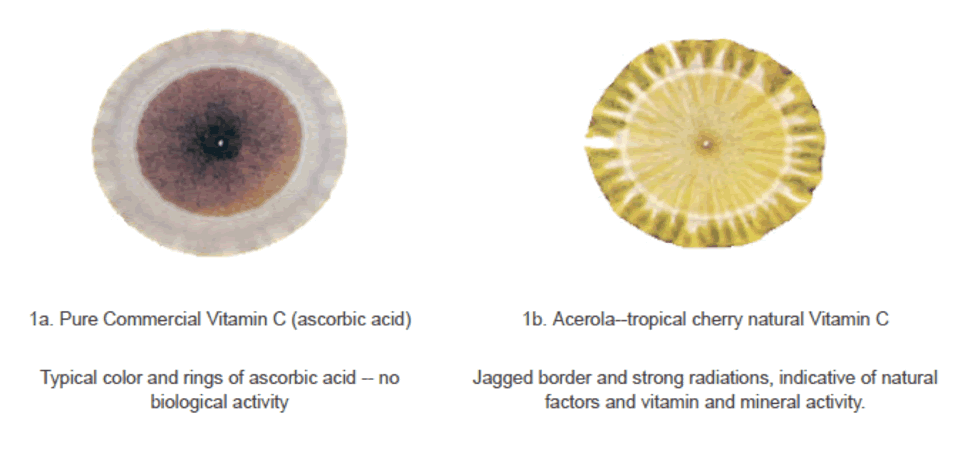“A vitamin is a working process consisting of the nutrient, enzymes, coenzymes,
antioxidants and trace mineral activators”
-Dr. Royal Lee, Applied Trophology 1956
Vitamins, as found in nature, are not individual molecular compounds but rather biological complexes. They are multi-step biochemical interactions whose activity is dependent upon a number of variables in that environment. Vitamin activity only takes place when all conditions are met in that environment. Vitamins cannot be isolated from their complexes and still perform specific life functions within cells. Vitamins cannot be isolated into their “active ingredients”, when isolated into artificial commercial non-living forms they act as drugs in the body rather than vitamins.
Unfortunately, the FDA only recognizes vitamins as the non-biologically active components that can be made in a laboratory. For example, the FDA states that ascorbic acid is Vitamin C because it is the only part of the compound that can be synthesized. Synthetic equals man-made and found nowhere in nature. Ascorbic acid is an isolate, a fraction, a distillate of naturally occurring Vitamin C. In addition to ascorbic acid, the naturally occurring Vitamin C compound contains rutin, bioflavonoids, Factor K, Factor J, Factor P, Tyrosinase, Ascorbinogen. Each cofactor must occur in its proper amount, otherwise there will be no vitamin activity. Ascorbic acid is described merely as the “antioxidant wrapper” portion of vitamin C; ascorbic acid protects the functional parts of the vitamin from rapid oxidation or breakdown. Over 90% of the ascorbic acid in this country is made from cornstarch and volatile acids in a factory in Nutley, NJ owned by Hoffman-LaRoche. It is then sold to other drug and supplement manufacturers.
Scurvy is a disease caused by a Vitamin C deficiency. Many trials have shown that ascorbic acid will not cure scurvy. Therefore, synthetically made ascorbic acid cannot be Vitamin C because the body does not recognize it as Vitamin C.
Another way to view the difference between natural vitamins and their synthesized counter-parts is via chromatograms. In a chromatogram, an extract of a substance under test is placed on specially manufactured filter paper. An image is then displayed with a chemical agent is applied to the specimen. The image, through difference in colors, rings, spike like forms, etc. can than be interpreted to determine its qualitative and biological values of the test item. In Nature, every living thing has a purpose but also a very distinct pattern in a chromatogram showing its biological activity. The fresher the substance, the greater the activity on the chromatogram and the more prominent the enzyme formations show. Most inorganic mineral, chemical or synthetic vitamins show only varied colored rings with no distinct patterns because they are not alive.
The following chromatogram shows the difference between naturally occurring Vitamin C and synthetic ascorbic acid:

